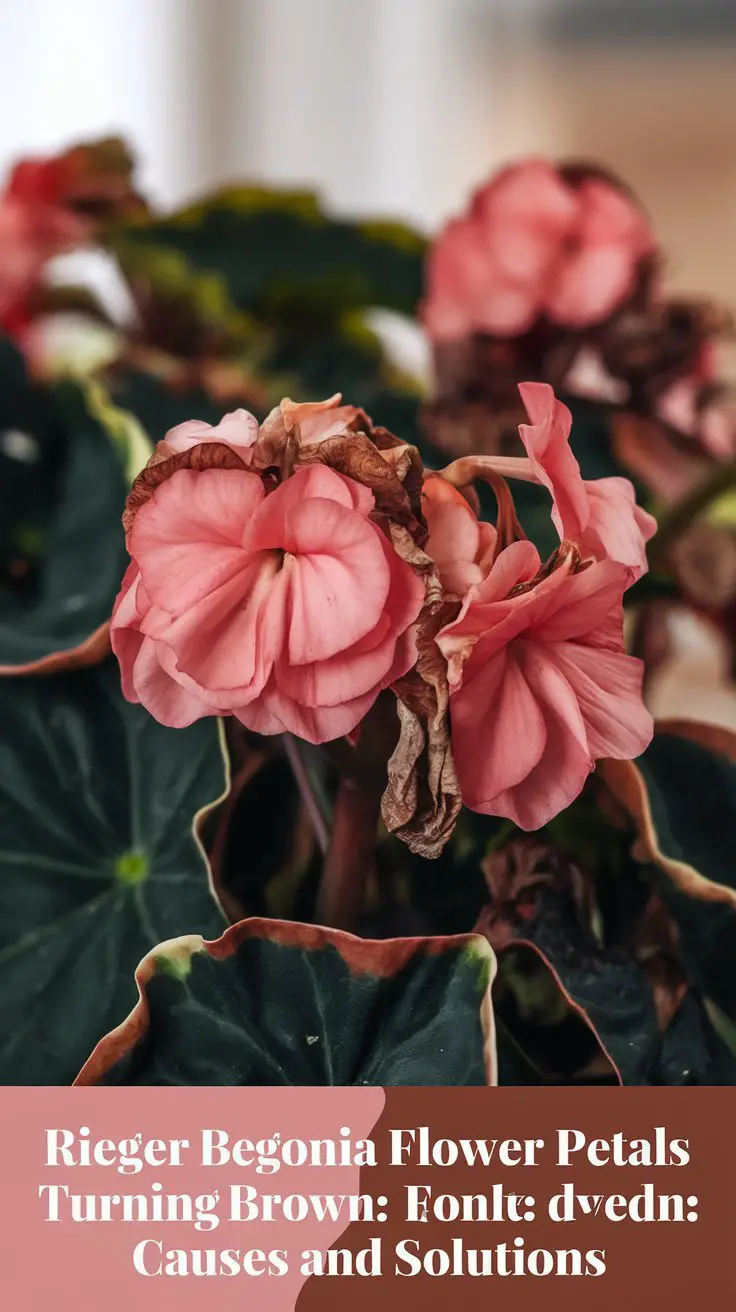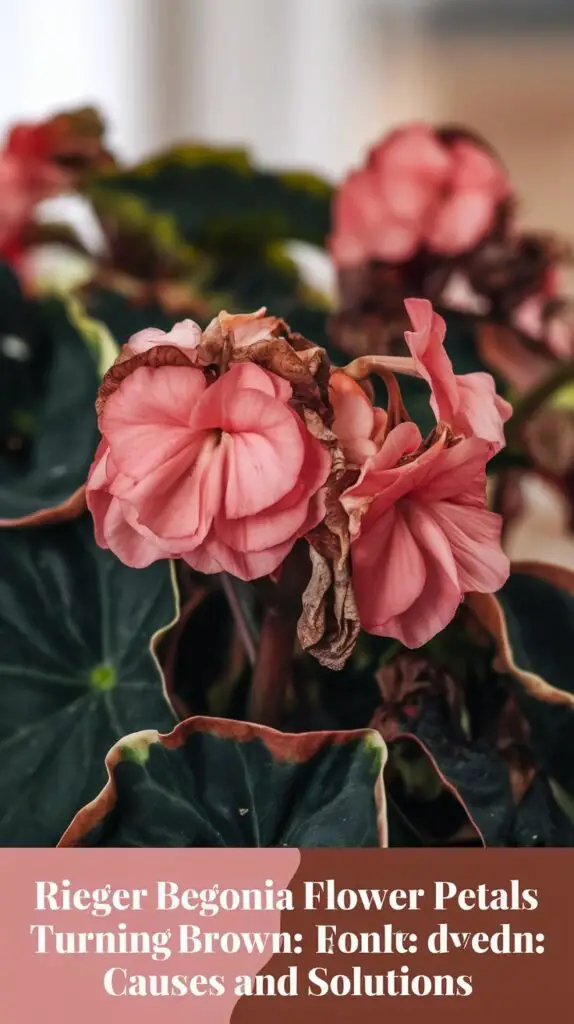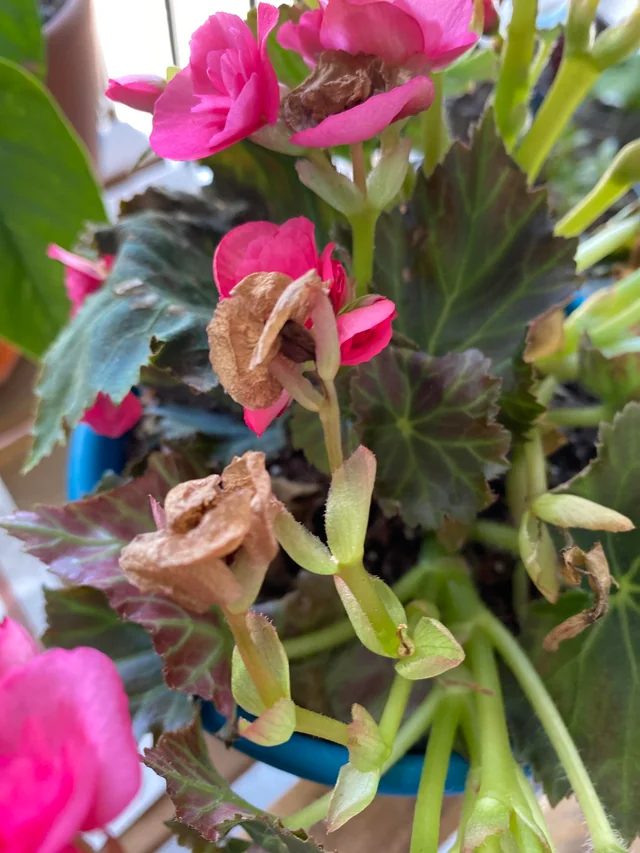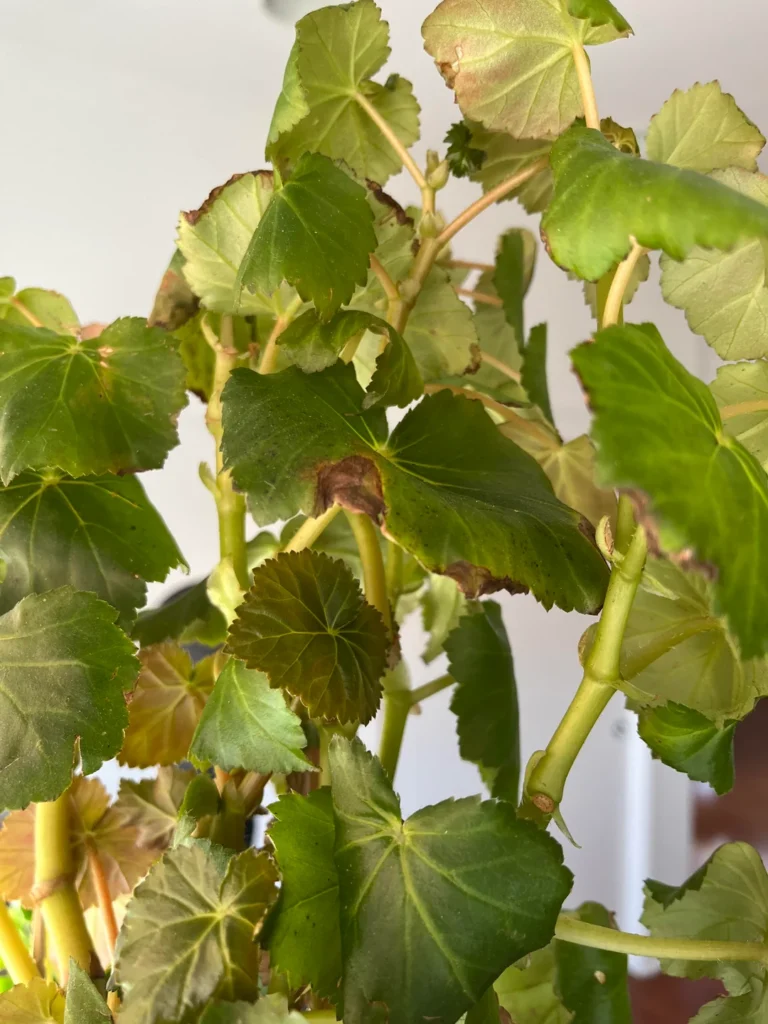Discover why Rieger begonia flower petals turn brown and learn expert solutions. Our 2024 guide covers causes, prevention, and care tips for vibrant blooms.
Rieger begonia flower petals turning brown is a common issue that can frustrate indoor gardeners and plant enthusiasts. This discoloration can be caused by various factors, including environmental stress, improper care, or pest infestations. Understanding the root causes and implementing appropriate solutions can help restore the vibrant beauty of your Rieger begonias.
As a horticulturist specializing in indoor ornamental plants with over two decades of experience, I’ve encountered and resolved numerous cases of petal browning in Rieger begonias. Let’s delve into the causes of this problem and explore effective solutions to keep your Rieger begonias healthy and blooming beautifully.
Understanding Rieger Begonias
Before we dive into the browning issue, let’s briefly discuss Rieger begonias:
- Scientific name: Begonia × hiemalis
- Also known as: Elatior begonias or winter-flowering begonias
- Origin: Hybrid developed in the 1880s
- Popular for: Abundant, colorful blooms and compact growth habit
Common Causes of Browning Petals in Rieger Begonias
1. Overwatering
Why It Happens: Excess water can lead to root rot, affecting nutrient uptake and causing stress that manifests as petal browning.
How to Identify:
- Soil feels constantly wet
- Lower leaves may yellow or drop
- Mushy stems near the soil line
2024 Update: New self-watering pots with moisture sensors are helping prevent overwatering in sensitive plants like Rieger begonias.
Solution: Allow the top inch of soil to dry between waterings. Ensure pots have proper drainage.
2. Low Humidity
Why It Happens: Rieger begonias prefer higher humidity levels. Dry air can cause petal edges to brown and crisp.
How to Identify:
- Brown, crispy petal edges
- Leaf edges may also brown
- Flower buds might fail to open fully
2024 Trend: Smart home systems now include plant-specific humidity controls for optimal growing conditions.
Solution: Use a humidity tray, room humidifier, or group plants together to increase local humidity.
3. Temperature Stress
Why It Happens: Exposure to cold drafts or temperatures below 60°F (15°C) can damage delicate petals.
How to Identify:
- Browning occurs suddenly, often after a cold night
- Leaves may also show signs of cold damage
2024 Innovation: New thermal plant covers are being developed to protect sensitive plants from unexpected temperature drops.
Solution: Keep plants away from cold windows and drafts. Maintain temperatures between 60-75°F (15-24°C).
4. Nutrient Imbalance
Why It Happens: Over-fertilization or nutrient deficiencies can cause petal discoloration.
How to Identify:
- Browning accompanied by yellowing leaves
- Stunted growth or deformed flowers
2024 Research: Studies are exploring optimal nutrient ratios specifically for Rieger begonias to prevent discoloration issues.
Solution: Use a balanced, water-soluble fertilizer at half strength every 2-3 weeks during the growing season.
5. Pest Infestation
Why It Happens: Pests like thrips or spider mites can damage petals, leading to browning.
How to Identify:
- Tiny specks or webbing on leaves and flowers
- Distorted growth or silver stippling on leaves
2024 Update: New bio-based pesticides are showing promise in controlling pests without harming beneficial insects.
Solution: Regularly inspect plants. Treat infestations with insecticidal soap or neem oil.
6. Fungal Diseases
Why It Happens: High humidity combined with poor air circulation can lead to fungal growth on petals.
How to Identify:
- Soft, brown spots on petals that may spread
- Fuzzy growth on affected areas
2024 Trend: UV-C light treatments are gaining popularity for preventing fungal issues in indoor plants.
Solution: Improve air circulation, avoid overhead watering, and remove affected blooms promptly.
7. Natural Aging
Why It Happens: As flowers age, petals naturally begin to brown and wilt.
How to Identify:
- Browning starts from the outer edges of older blooms
- Other parts of the plant remain healthy
2024 Insight: New studies suggest that certain plant hormones can delay the natural aging process in flowers.
Solution: Regular deadheading of spent blooms encourages new flower production.
Best Practices for Healthy Rieger Begonias
To prevent petal browning and maintain vibrant Rieger begonias:
- Provide bright, indirect light. Avoid direct sunlight, which can scorch petals.
- Water when the top inch of soil feels dry, using room temperature water.
- Maintain humidity levels between 50-60% using a humidifier or pebble tray.
- Fertilize monthly during the growing season with a balanced, water-soluble fertilizer.
- Prune regularly to improve air circulation and remove any diseased parts.
- Repot annually in fresh, well-draining potting mix designed for flowering plants.
Nurturing Vibrant Rieger Begonias
While browning petals on Rieger begonias can be concerning, understanding the causes and implementing proper care techniques can help maintain these beautiful plants. Remember, prevention is key – creating an optimal environment for your begonias will result in healthier plants and more vibrant blooms.
By following the guidelines in this article and staying attuned to your plant’s needs, you can enjoy the stunning floral displays of Rieger begonias year after year. Happy gardening, and may your begonias flourish with colorful, healthy blooms!
For more information on indoor plant care and begonia cultivation, visit resources like the American Begonia Society or your local cooperative extension office.
For more gardening tips and plant care guides, visit usagardenhub.com




